
by pankaj | May 10, 2024 | Beaches, Destinations, Honeymoon planning, Island, Latest Post, Mountains, Romantic, Swimwear, Tips, Travel Tips, vacations, Vacations & Leisure
Waterfalls, these natural phenomena, have mesmerized humans for decades, attracting people from all over the world to their breathtaking displays of the power and beauty of nature. Here, we discuss the specifics of 10 of the most stunning waterfalls in the world, each one with its own irreplaceable character and natural beauty.
Angel Falls, standing as the world’s highest unobstructed waterfall at 979 meters (3,212 ft), can be considered a peerless work of nature plummeting off the Auyán-Tepui range in Canaima National Park in Venezuela. The Churún River is responsible for this whole deal since it eventually unites with the Caroní river, which then flows into the Atlantic Ocean, thus making Angel Falls a marvel not only for the eyes but also an integral part of the local hydrological system. Named after Jimmie Angel, an American aviator who first flew over the falls in 1933, Angel Falls is also known locally as “Kerepakupai Merú,” which translates as “waterfall of the deepest place.”
- Tugela Falls (South Africa)
Located in Royal Natal National Park, South Africa, the Tugela Falls falls from the Drakensberg Escarpment with a height of 948 m (3,110 ft), which makes it take the second largest place in the world among the waterfalls. Along the way, its waters from the Tugela River flow into the Indian Ocean, further improving the ecosystem of the surrounding region. The cultural significance of Tugela Falls is rooted in the Zulu people who have considered the Drakensberg Mountains as sacred and named the falls as “Thukela,” literally meaning “sudden.” The visitors experience the full magic of the falls during the rainy season from November to March.
- Tres Hermanas Falls (Peru)
In the middle of the Cordillera Escalera mountain range in Peru, Tres Hermanas waterfall is located with 3 falls height of 914 meters (2,999 ft). The falls feed into the Utubamba River which in turn connect to the Amazon River Basin, the main resource for communities and wildlife in the area. The name “Tres Hermanas” characterizes the three parallel streams that run together to form the falls which contribute to its beauty and mystery.
4.Olo’upena Falls (United States)
A 900 meters (2,953 ft) high cliff on the Molokai Island in Hawaii is where the amazing Olo’upena Falls are located. Its isolation amplifies the mystery, being only reachable by helicopter, creates a privileged hanging place. Olo’upena Falls belongs to Halawa Valley, which is related to the Hawaiian culture and history in this place. Therefore, visitors will not only be in front of the natural wonder but also the connection to the island’s cultural heritage.
5.Yumbilla Falls (Peru)
Deep inside Peru’s Cordillera Escalera, there is a Yumbilla Fall that falls down 890 meters (2,920 ft) at the source of the Yumbilla River. As part of the Amazon River basin, its waters are responsible for one of the most biologically diverse regions on the planet, providing habitats to thousands of species of plants and animals. Yumbilla Falls is a component of a series of waterfalls in the region that includes Gocta Falls, the famous waterfall in the Peruvian rainforest, which makes it an attractive destination for nature-seekers.
6.Kela Waterfall (China)
Kela Waterfall being a part of Yunnan Province in China and with the Nu River fueling its unbelievable flow, it stands at a height of 870 meters (2,854 ft) in the middle of a green forest. However, as its waters merge with those of the Salween River, the latter finds itself flowing to the Andaman Sea, and in the process, shaping the scenery and lifestyles. Kela Waterfall is situated in the Gaoligong Mountains which are known for their high biodiversity, housing rare animal species like the Yunnan golden monkey and clouded leopard.
7.Waiʻīanu Falls (United States)
Perched on the beautiful Kauai Island in Hawaii, Waiʻīanu Falls captures the view with its streams falls of 860 meters (2,825 feet), the source being the Hanakāpīʻai Stream. The passage of the stream to the Pacific from the island is a witness of the natural allure of the area and the power of water to change landscapes over time. Waiʻīanu Falls is enveloped in the lush natural surroundings near Kauai’s western coast, Na Pali, and it is one of nature’s greatest wonders for one to see.
8.Mutarazi Falls (Zimbabwe)
Plunging 762 meters (2,500 ft) straight down the Chimanimani Mountains located in Zimbabwe’s Eastern Highlands, the Mutarazi Falls is a majestic natural wonder. Its streams feed the Sabi River system, which in turn sustains a wide variety of ecosystems and communities as well as the Indian Ocean. Mutarazi Falls forms the main attraction in Mutarazi National Park which is a protected area famous for its incomparably rich orchids, rare orchids, endemic bird species, and diverse flora and fauna.
9.Jacobabadal Falls (Suriname)
The surging waters of Jacobabadal Falls plummet 2441 ft into the crevice of Tabiki Creek, which is located within the Sipaliwini Savanna of Suriname. Its flowing waters finally unite with the Corantijn River, extending the underlying prosperity of the Atlantic Ocean. Jacobabadal Falls is found in Tumuc-Humac Mountains, which is known for its unspoiled wilderness and distinct geological landmarks, treating a visitor to the unadulterated Suriname’s ecosystem.
10.Kaieteur Falls (Guyana)
Usually being praised as one of the most scenic water drops on the planet, Kaieteur Falls on the Potaro River in Guyana surpass the 226 meters (741 ft) mark. Its multi-faceted gush over a sandstone cliff into a tranquil pool beneath is proof of the creativity of nature. As a tributary of the Essequibo River, Kaieteur Falls is the main factor in the hydrological cycle in the region that enhances the Atlantic Ocean. Kaieteur falls are part of Kaieteur National Park, a protected area full of exclusive flora and fauna, some of which are as rare as the Guiana cock-of-the-rock and the golden frog.
Although these 10 waterfalls present only a small glimpse into nature’s splendor, the world holds many other falls, each with its own captivating form and undeniable significance. From the impressive Ban Gioc Falls on the Vietnam-China border to the amazingly beautiful Seljalandsfoss Waterfall in Iceland, the beauty and power of waterfalls around the world remind us, time and time again, of the majesty of nature and how everything on our planet is connected.

by pankaj | Apr 13, 2024 | Blog, Ecommerce, Fashion, Latest Post, Women
Shapewear dresses help to make you look slimmer, more fit, and sexier under any outfit, boosting your confidence and outlining your natural curves. However, the number of alternatives presents a challenge of how to choose the best one. Let’s explore eight amazing shapewear dresses from top brands, focusing on features, comfort, and how they can best suit your needs.
- Yitty Nearly Naked Shaping Mid-Thigh Bodysuit

- Brand: Innovative shapewear company, championing size inclusivity and comfort, something unique in the industry – Yitty is a fresh breeze in the field.
- Features: This bodysuit provides targeted smoothing from the torso to the thighs so you can achieve a smooth and sculpted silhouette without feeling confined. That is where the magic of Yitty’s fabric technology comes in. Breathable, seamless, and lightweight, it feels like a second skin and conforms to your curves without any pinching or digging. Adjustable straps mean a personalized fit and for those looking for discretion, the almost invisible construction guarantees no panty lines.
- Comfort Level: A significant proportion of reviewers praise how the soft and lightweight fabric resembles a second skin. This can be a good solution for people who highly value comfort and the natural look.
- Skims Sculpting Seamless Mid-Thigh Bodysuit

- Brand: Admired by celebrities for its sculpting power and its fine fabrics, Skims is the favorite of those who just want to have a more dramatic shaping.
- Features: Utilizes compression technology that effectively smoothes and shapes while not compromising comfort. The mid-thigh cut offers sufficient leg coverage while the seamless construction provides a no-show finish, even under the most form-fitting dresses.
- Comfort Level: It has a smoothing effect, but the compression may be moderate, for example, to some users. This is a good option for those who like a sculpted look but also give comfort consideration for everyday dressing.
- Honeylove Cami Bodysuit

- Brand: The Honeylove brand focuses on excellent shapers for maximum control. Such clothing is suitable for the people that need more serious shaping for special occasions or outfits that require a more prominent curve.
- Features: The power shaping with specific compression on the abdomen and back makes this costume smooth and hourglass-like figure. Adjustable straps and an open-bust design make it possible to fit and support the bra perfectly.
- Comfort Level: Medium-high. The compression is firm, which gives excellent shaping results, but may not be comfortable for all-day wear for a person, newcomers to shapewear.
- Spanx Suit Your Fancy Plunge Low-Back Mid-Thigh Bodysuit

- Brand: They’ve become a household name in shapewear and offer great results and variety of styles to suit different needs.
- Features: Especially meant for dresses with daring necklines and backs, this bodysuit is fitted and has a plunging neckline and a low-back design to avoid any peek-a-boo moments. The mid-thigh cut provides shape to the legs and the fabric is smooth and non-see-through for full coverage.
- Comfort Level: Compression suits effectively shape and the fabric is comfortable. Beyond the low-back design, the fit might require modifications so as to be adjustable enough, especially for a fuller bust.
- Maidenform Wear Your Own Bra Singlet Fajas Shapewear

- Brand: A reliable brand providing different types of shapewear at attractive pricing, Maidenform is a great option for shoppers looking for affordability and quality.
- Features: The singlet gives you the chance to wear your own bra for a customized fit, which in turn guarantees comfort and proper support. It’s a process that can give a gentle to moderate shape for smoothing tummy and light control. A recognizable design with a hook-and-eye fastener makes putting it on and taking it off a breeze.
- Comfort Level: This is an ideal choice for those prioritizing comfort over maximum compression. The breathable fabric and the comfort level of the underwear are convenient for all-day wear under loose dresses or skirts.
- Shapermint High Waisted Body Shaper Shorts

- Brand: Shapermint is very famous for providing quality shapewear at inexpensive prices, making it a favored choice for daily wear.
- Features: Tones abs, glutes, and thighs for a smooth appearance without compromising your wallet. The high-waisted cut is designed to provide tummy control and lower-back support, leaving you with a flattering posture.
- Comfort Level: They can be made out of a lightweight, breathable fabric, which makes them sufficiently comfortable to be worn under dresses and skirts. They can be worn underneath the pants for an even look.
- True & Co. Body Lift Tank Top

- Brand: True & Co. centers on size inclusivity and comfort which shapewear by definition does not restrict.
- Features: This tank top brings light to moderate shaping effect with the purpose of evening and correcting your figure. It’s wonderful for daily use under loose dresses, or for women who want a more hidden shaping effect. The adjustable straps provide a personalized fit, while the breathable fabric and sweat-wicking materials ensure that you remain cool and comfortable all day long.
- Comfort Level: The main point is to smooth the area with a light touch to give a soft feel. This is one of the best options if one wears shapewear every day or even for those who have never done shapewear before.
- Levante Shaping Dress

- Brand: Known for its expensive fabrics and innovative styles, Levante ensures an ultimate shapewear brand experience.
- Features: This wrap dress is not only perfect for fashion but it also shapes your body. With it, there is a built-in bra that provides seamless support and thus there is no need to wear a separate bra. In addition, the fabric that is used is smooth, breathable, and also opaque so that you can wear it comfortably and invisibly under clothing.
- Comfort Level: Medium-high. The shaping is effective, but the extravagant fabric makes it more pleasant to wear and less itchy than what shapewear has to offer. This is a perfect option for special events and enthusiasts who treasure a high-end shapewear experience.
With such a variety, think about your needs and taste when selecting your shapewear dress. If you like feeling comfortable all day and have a slight smoothing effect, prefer a soft, breathable fabric with gentle to moderate level of compression. For a more dramatic shaping result that can be used on special occasions, a suit with high compression might be adequate. Then, the perfect shapewear dress is the one that helps you to feel great and calm inside.

by pankaj | Apr 12, 2024 | Australia, Blog, Latest Post, Travel Tips
In the rapidly shifting and multifarious world, certain regions are undoubtedly distinguished for their unique sense of utmost security. Let’s brief the top 10 safest spots on the planet according to the newest Global Peace Index (GPI).
- Iceland
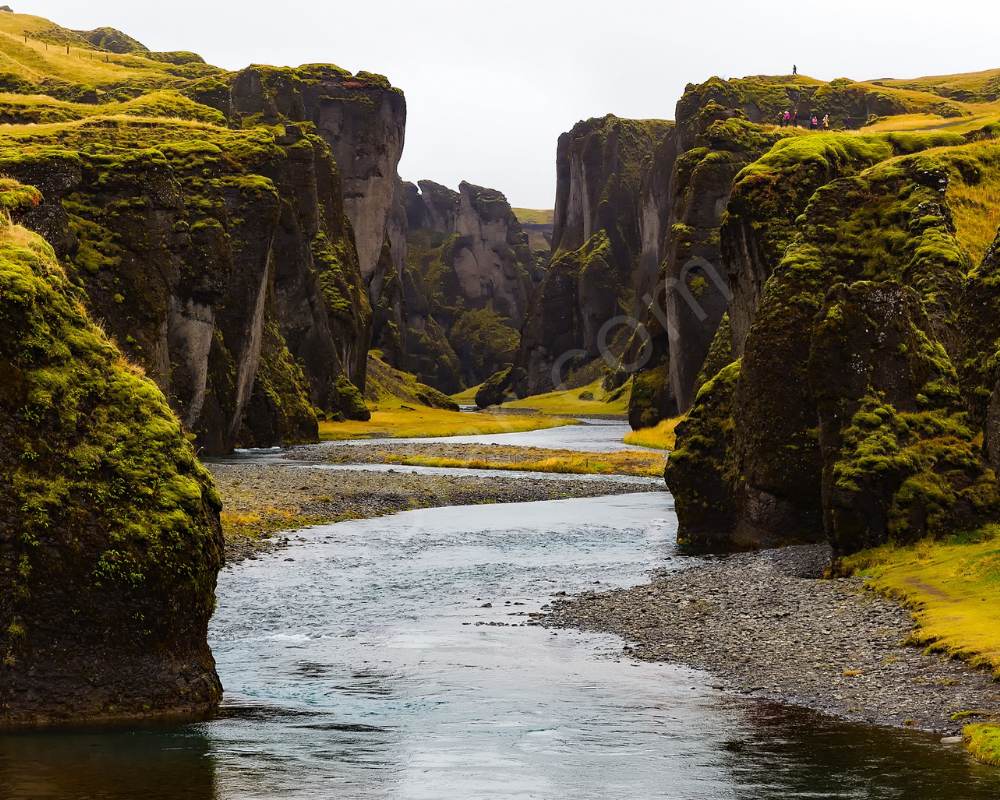
This volcanic island nation of the North Atlantic remains on top, giving safety guidelines and instructions. While the country has some stunning glaciers and geothermal abilities, Iceland also is very laid back with almost zero crime rates, applying social justice and equality. It is the inner core of Iceland’s security that relies on its small, homogenous population, remote location with no major conflicts, and very strong social cohesion and welfare system.
- Denmark
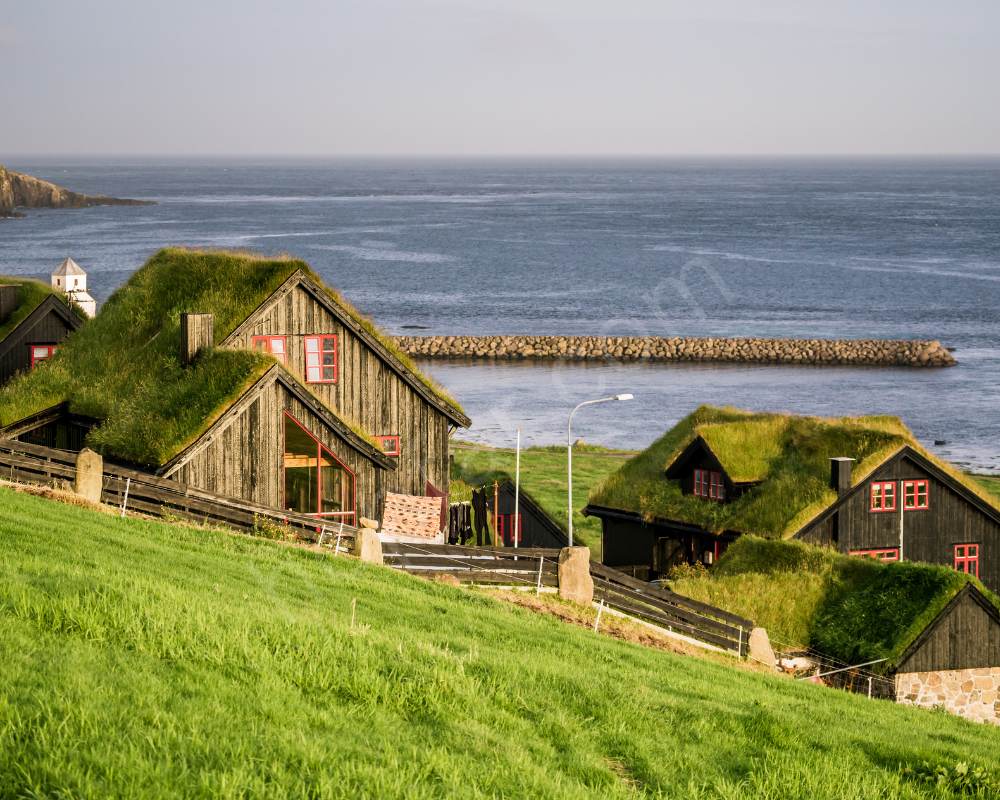
Denmark’s safety formula is the perfect mix of multi-ingredients. The country has a high standard of living, with good education and healthcare that are readily available. The stable and open government, in conjunction with a calm and peaceful political environment, allows the citizens to have faith and a feeling of being secured. Denmark takes social stability and the resolution of conflicts as its big advantage, which is a solid foundation of the country’s global leadership in safety.
- Ireland

The Emerald Isle’s friendly reputation is not only about creating a slogan for tourists. The Global Peace Index (GPI) places Ireland in a higher position than it was in the last few years. The country has a low crime rate, and its citizens are known for their warmth and hospitality. This improvement is due to constant endeavors for social stability that are based on the restorative justice and community policing principles.
- New Zealand
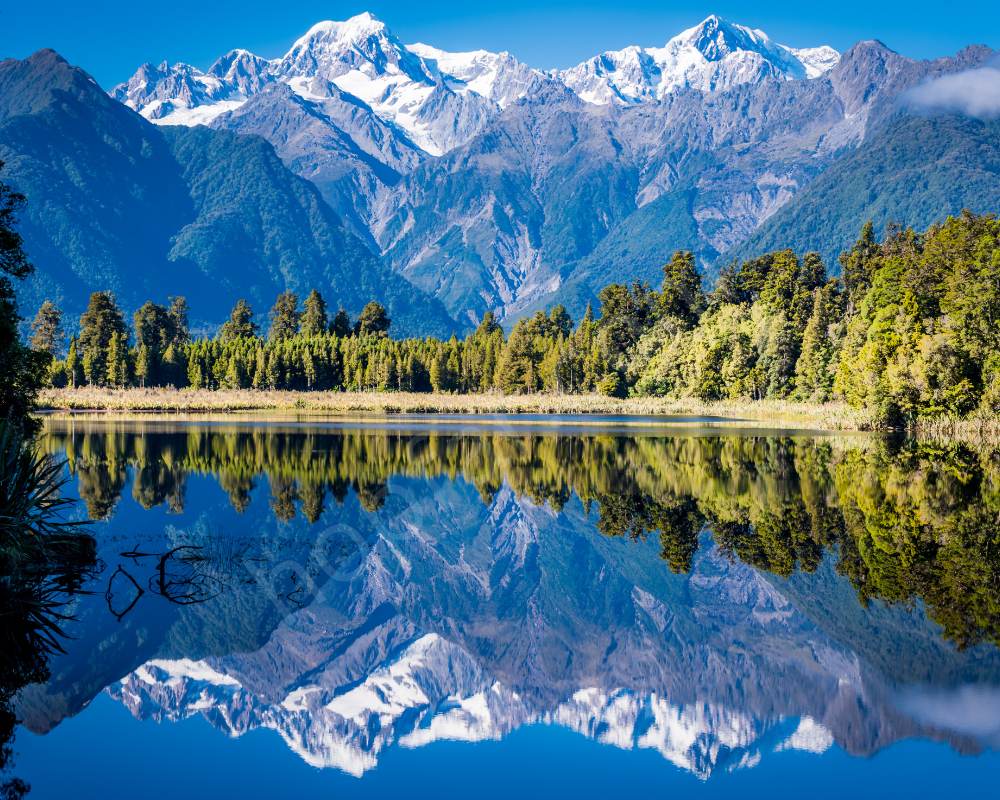
Along with its world-famous natural splendor, New Zealand’s social fabric is also awe-inspiring. Like Iceland, New Zealand has a low level of crimes; however, the most violent crimes included. Community connection and volunteerism that come with social responsibility are other important elements. Being isolated on the far side of the geopolitical axis, New Zealand is so shielded, allowing it to enjoy a rather peaceful environment.
- Austria
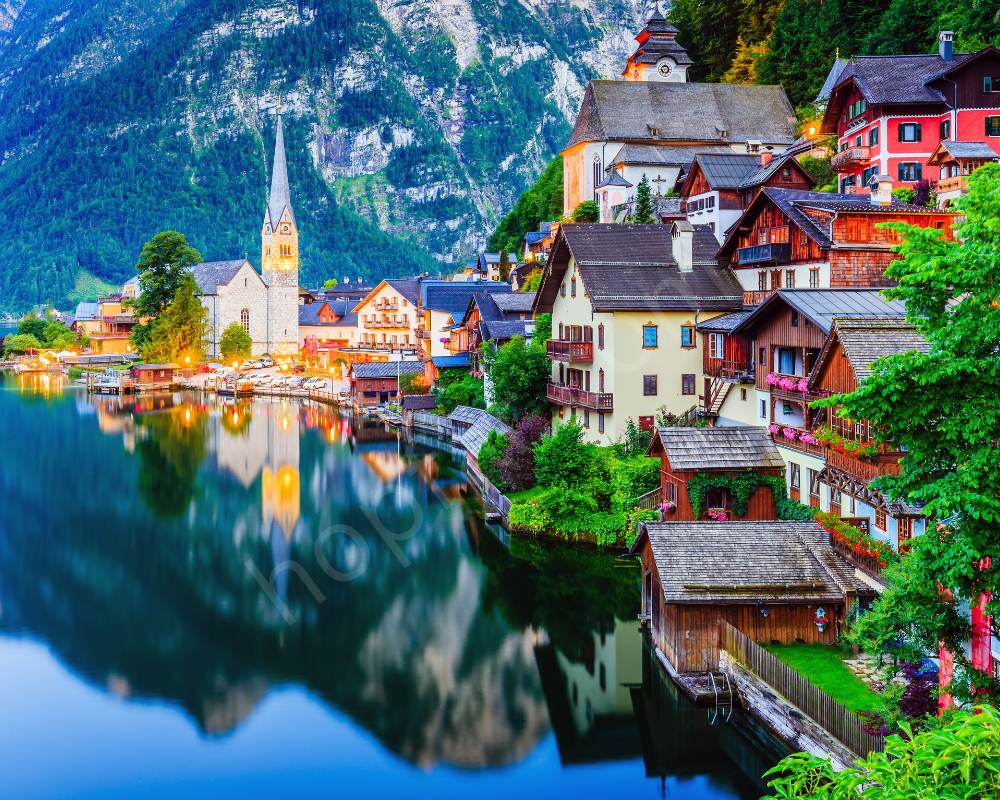
Hidden between the grand mountains of the Alps, Austria represents the perfect peacefulness and security. The country has many advantages, among them a high standard of living, good economy, and well-developed social services. Austria’s status as a safe haven in the international community is bolstered by its long tradition of neutrality and its efforts to peacefully solve disagreements.
- Singapore

This island country in Southeast Asia is a haven for safety. Singapore has a very efficient law enforcement system and stringent gun control regulations, which thus result in exceptional rates of crime. Through its ongoing efforts for economic development and social stability, the country is able to create an environment that is conducive to its people.
- Portugal

Discover the pleasures of the sun and meditation in Portugal. This Iberian country with the low crime rate and the relaxed, warm environment. The social safety net of Portugal and its restorative justice system leads the country to a high state of security. Additionally, its geographical location on the west edge of Europe also matters, since it keeps it away from major geopolitical tensions.
- Slovenia
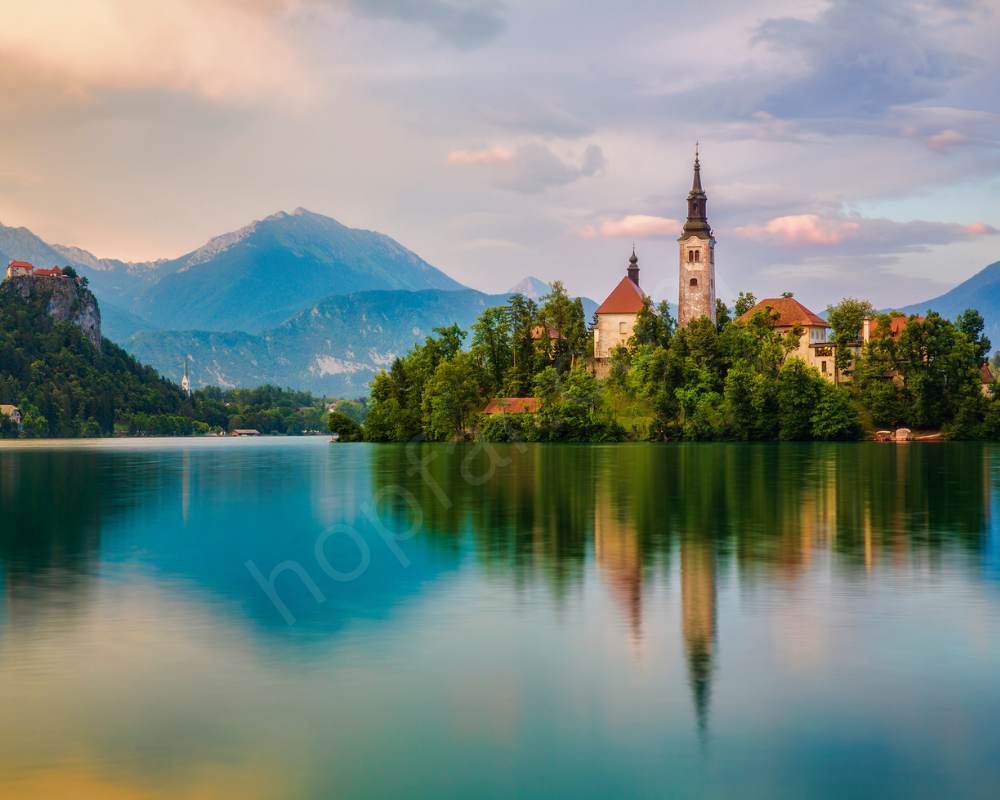
Located between the Julian Alps and the Mediterranean Sea, Slovenia itself can be a perfect setting for peace. This tiny Central European state is the nation with the best social welfare and is remarkably socially cohesive. Slovenia’s international cooperation is proof of its neutrality and a key to its image as a safe place to live.
- Japan
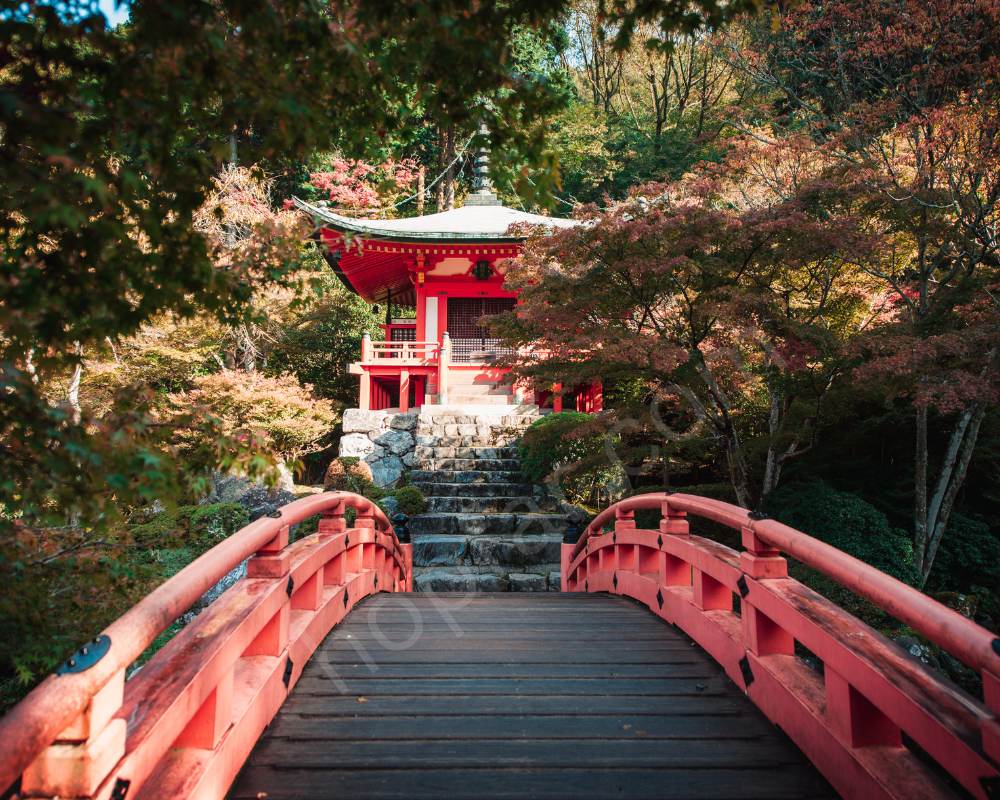
Be part of an unusual combination of tradition and sensitivity in Japan. A small state like this is well-known for its low rates of crime, especially those related to violence. Authority is always respected, and the community enjoys a strong sense of responsibility, which together produces a cohesive environment that is safe and secure.
- Switzerland
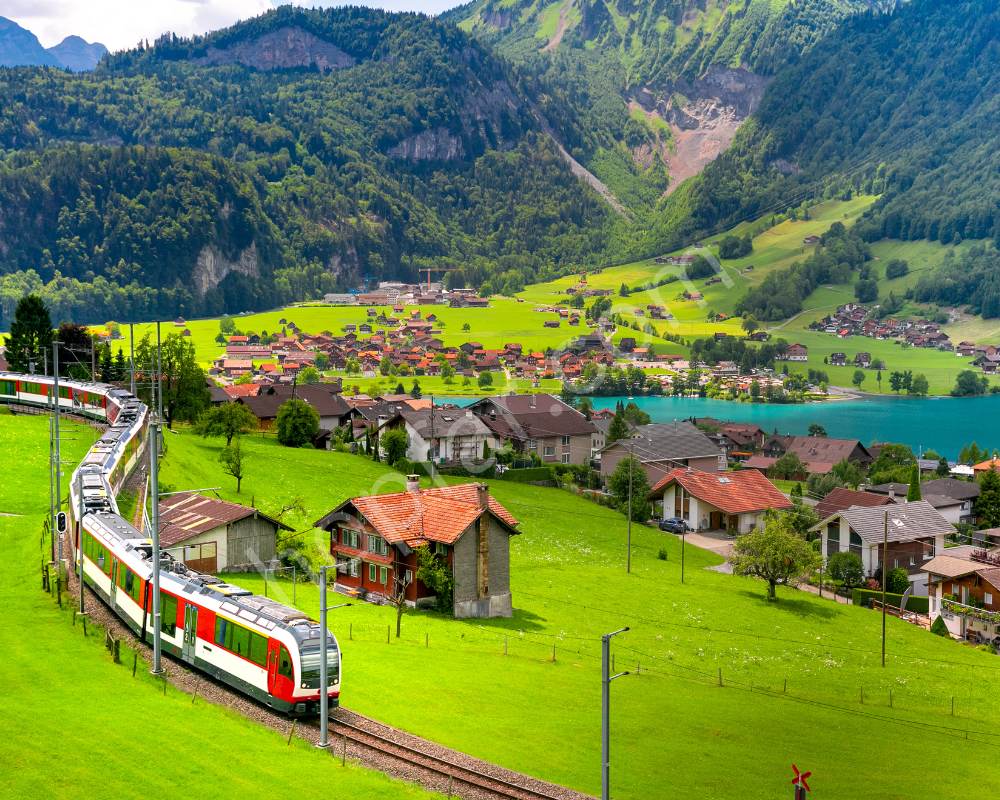
The country is also well-known for its stunning landscapes and chocolate. The country has been characterized by a stable political climate and neutrality for a long time. Switzerland has a solid economy and ample social care guarantees a high standard of living for its people. Furthermore, the political organization of Switzerland in a decentralized way creates a feeling of local responsibility and ownership, thus adding to the general stability.
Why These Places?
These top contenders share a common recipe for safety:
- Low Crime Rates: Low levels of violent crime and property crime, which are the most important characteristic of these safe places.
- Strong Social Cohesion: Community feeling, great social safety nets, and a high level of trust for institutions are very important for improving the well-being of a nation.
- Political Stability: Governments with a steady hand and a dedication to the peaceful resolution of conflicts enable an atmosphere for security.
- High Quality of Life: Education, healthcare, and economic opportunities are the keys that equalize the relations and create a general feeling of safety.
Why it Matters?
Safety is the basic human instinct. Knowing that there are such “islands of peace” on our planet gives hope for a more tranquil future. Realizing the factors that promote safety helps us to work towards similar improvements in other regions as well.
The GPI list is a list that is continuously being updated in solidarity with all efforts for global peace. Encouraging these sanctuaries not only recognizes the gains made so far but also underlines the hope for a safer place for everyone. These nations of peace flow a light of hope and prove what is possible if social justice, strong institutions, and commitment to peace are at the foreground.

by pankaj | Apr 10, 2024 | Beaches, Blog, Latest Post
Water parks turn out to be a universal and comfortable entertainment area that provides various rides, relaxing activities, and plenty of fun for visitors of all ages. However, because there are multiple parks scattered across the world, what parks stand taller than the others? Here’s a curated list of the top 10 water parks, guaranteed to drench you in unforgettable thrills and tranquility.
- Siam Park, Tenerife, Spain
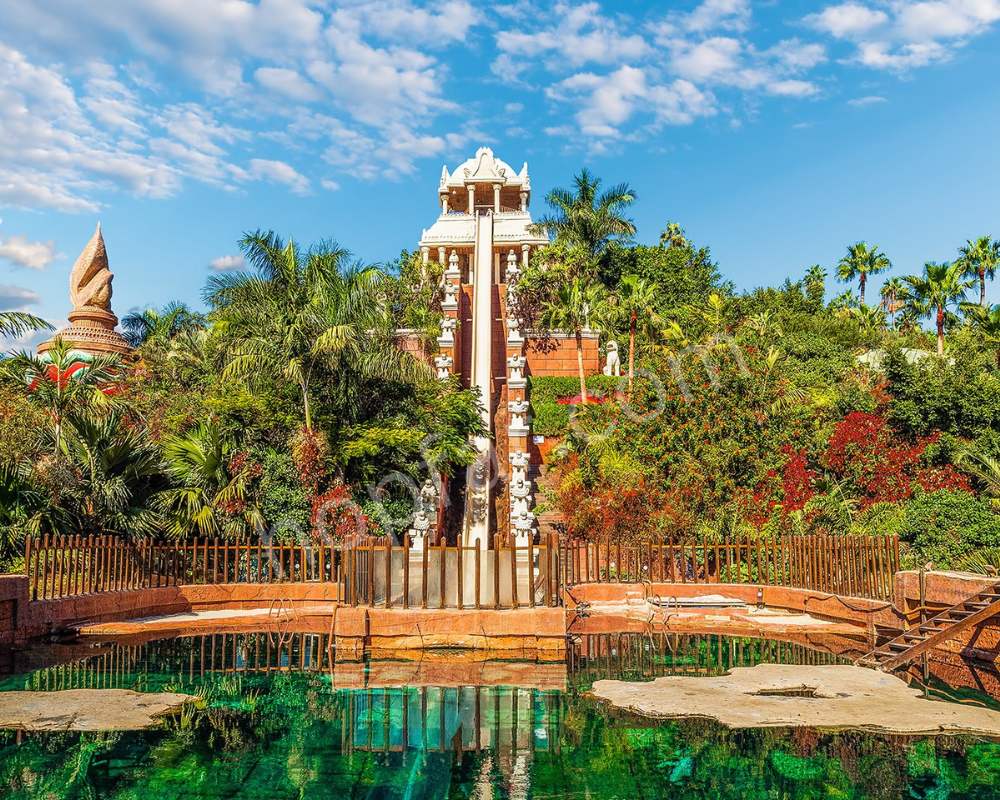
Get ready, adrenaline lovers! How about Siam Park’s “Tower of Power,” a nearly vertical one that will take your breath away? But for those who love the ups and downs, the “Kinaree” would be an exhilarating one that ends up with a thrilling conclusion. The youth and the families can enjoy the slow float along the “Mai Thai River” through the lush landscapes.
- Beach Park, Fortaleza, Brazil

Beach Park goes beyond being just a water park; it is a large entertainment complex that is situated on the shorelines. For daring ones “Insano,” the highest water slide in South America, is where they can surpass their thrill limits and maximum speeds. The “Hippopotamus Pool” provides a more relaxed experience if you’re looking for a gentle lazy river adventure where you can just soak up the sun.
- Waterbom Bali, Kuta, Indonesia

Waterbom Bali artfully mixes exhilarating rides with magnificent panoramic views. To reach the pinnacle of thrill, “The Climax” whooshes riders down a vertigo angle at an unbelievable speed. If you’re looking for a different type of rush, “Python” takes you on an adrenaline-filled journey through a dark tunnel, leaving you wanting more. For those less in for adventure, they can take a relaxing ride on the “Lazy River” or they can enjoy the refreshing waves of the wave pool.
- Aquaventure Waterpark, Dubai, UAE

Enjoy a deluxe vacation with a twist full of exhilaration by experiencing Aquaventure Waterpark. Plunge down the gravity-defying “Aquaconda,” the world’s longest waterslide, just for the rush of adrenaline and the experience of twisting and turning. If you want to get an extraordinary underwater experience, snorkel with the majestic sharks at the “Shark Encounter.” The relaxation area with children’s play zone is dedicated to families. After a fun day, you can relax in a calm lazy river.
- Universal’s Volcano Bay, Orlando, Florida, USA

Experience the rides found in the world of a tropical paradise at The Universal Volcano bay. The “Koa Kea Coaster” thrills the riders by rushing them through a volcano fortress for a thrilling adventure. Are you looking for an extra amount of excitement, the “Krakatau Aqua coaster” features a dark tunnel and a shocking drop that will leave you speechless. When you need a rest from the adrenaline rush, just ride the Kopiko Wai Winding River or relax at the peaceful tiguani-themed Waturi Beach while sunbathing.
- Wild Wadi Water Park, Dubai, UAE

Experience an Arabic journey at Wild Wadi Water Park. Enjoy the jaw-dropping excitement of the giant waterslide known as “Jumeirah Sceirah” that will put your bravery to the test. For something unique, “Breaker’s Bay” has the Middle East’s largest wave pool, which is great for catching some waves and working on your boogie board skills. The park won’t forget about families – there are ample tamer rides, a lazy river where you can drift peacefully and a wave pool especially dedicated for young guests.
- World Waterpark, Edmonton, Canada

Get over with winter blues by taking a dip at the World Waterpark, the world’s largest indoor water park. This temperature-controlled haven is the perfect place to stay amused all year round, even when the weather outside is not so pleasant. Experience a thrilling ride on the “Storm” rollercoaster, where riders speed through a sequence of twists and turns in a high-velocity waterslide. The “Galaxy” complex offers a more family-conducive experience with a giant play structure that is equipped with slides, water cannon, and tipping buckets, and which is highly entertaining for the younger children.
- Tropical Islands, Krausnick, Germany

You can forget about the European winter and immerse yourself in the blossoming vegetation and perfectly transparent waters at Tropical Islands. This colossal indoor water park, which is also the largest indoor rainforest in the world, has a hot air balloon ride that will take you on a journey to enjoy the magnificent scenery. “South Pacific Slides”, for adrenaline junkies, is a quick and exhilarating descent full of twists, turns, and drops. Young ones will also find a number of kid-focused attractions such as a pirate ship playground and a family-friendly lazy river.
- Chimelong Water Park, Guangzhou, China

Plunge into the realm of aquatic fun at Chimelong Water Park. This is the first MagiWave water coaster; it is called “Tornado,” will take you through many uphill climbs and gravity-defying drops. If you want a more casual experience, the park has different wave pools, lazy rivers, and kids’ play areas.
- Atlantis Aquaventure Waterpark, Paradise Island, Bahamas

Immerse yourself in the paradise of Atlantis Aquaventure Waterpark. Swim with colorful fish in underwater tunnels of the park, or shoot straight down a “Power Tower,” an almost vertical drop that will make you breathless. For the most exciting family adventure, set sail on the “Atlantean Rapids” where you will navigate up and down the river and through cascading waterfalls.
Therefore, if you are looking for the scary thrill, the serene calm, or the ride of your life, then this list of top 10 water parks will have something for everyone. Pack your bathing suits, lather yourself with sunscreen and get ready to experience a spectacular splash.

by pankaj | Apr 9, 2024 | Blog, Latest Post, Travel Tips
Thailand has an amazing mix of beautiful beaches, ornamented temples, and of course the great markets for tourists to visit. From bargain hunts to trendy buys and cultural experiences, Thai markets are for everyone to find satisfaction in. Here’s a peek into 7 popular markets around the country, giving you a taste of the diverse shopping experiences that lie ahead:
- Chatuchak Weekend Market, Bangkok

Renowned as “JJ Market” the vast weekend market has more than 15000 stalls. Here you can literally find anything you need like clothes, souvenirs, handicrafts, or local delicacies. Get ready to work on your negotiation ones! Get lost in the maze of remarkable alleys, exploring the diverse assortment of colorful textiles, and finding out atypical stylish things: hand painted ceramics and rarest antique pieces.
- Rod Fai Train Market, Bangkok

This hipster wonderland provides a shopping experience you can’t find anywhere else. The train compartments become a place where sellers are offering second hand clothes, unusual household items as well as yummy street food. Explore live music as well as vintage fashion from a variety of racks or go and grab a bite from a station turned into a food carriage featuring mouthwatering local specialties. There are two locations: Ratchada for a vintage industrial setting and Srinakarin for a more family space.
- Saturday Walking Street, Chiang Mai

Going into the central district of Chiang Mai, the Old Town, you will encounter this vibrant night market. In the small stalls, you can buy handmade textiles, as well as Northern Thai specialties and local crafts that are created in a pleasant atmosphere. Savor the textures of silk scarves, delight in aromatic curry pastes, and admire the artisans working on distinctive techniques. The Night Market, which is another Chiang Mai institution, gives a similar feeling but with a permanent location.
- Warorot Market (Kad Luang), Chiang Mai

This daytime market caters to locals, making it a great place to experience authentic Thai shopping. Discover fruits, vegetables, spices, flowers and everyday goods – an actual multi-sensorial experience!Stock up on exotic fruits you’ve never seen before, lose yourself in the vibrant colors of fresh chilies and spices, and don’t forget to try some “khanom,” traditional Thai sweets with unique flavors and textures.
- Damnoen Saduak Floating Market, Ratchaburi

The unforgettable taste of Thailand is available at this very famous floating market.Vendors sell fruits, vegetables, and handicrafts from their boats along the canals. For all of its modern trends, it is still a look back into a bygone era.Take a longtail boat tour through the maze of canals, stopping to barter with vendors for souvenirs and sample fresh seasonal produce directly from their boats.
- Pratunam Market, Bangkok

This is a one-stop shop for budget-oriented fashion shoppers.Find trendy clothes, shoes, and accessories at unbeatable prices. Bear in mind that it may be crowded, though!Hone your bargaining skills and navigate the maze of tightly packed shops for the latest fashion trends at a fraction of the cost.
- Hua Hin Night Market

This lively night market shows a diverse selection of souvenirs, clothes and street food stalls.It’s a great place to soak up the local atmosphere and enjoy delicious Thai snacks. Taste aromatic satays (skewered meats), savor steaming pad thai noodles, and experience a kaleidoscope of colors – amidst the lively night market bustle.
Beyond these 7 gems, here are a few bonus markets to add to your itinerary
Pak Khlong Talat (Flower Market), Bangkok
A haven for flower enthusiasts, this market offers a breathtaking array of blooms, from vibrant orchids to fragrant jasmine garlands. It is indeed a visual and a photographer’s heaven.
Cicada Market, Hua Hin
This weekend market caters to a younger, more artistic crowd. Nose through unique handmade crafts, fashion accessories, and home goods, mingling with a vibey atmosphere and live music.
Tha Pae Walking Street, Chiang Mai
This charming night market winds its way along the Ping River, offering a mix of traditional handicrafts, souvenirs, and delicious street food. Relax and slowly move around, enjoying the views, sounds, and fragrance of this marvelous market.
With its diverse offerings and captivating atmosphere, Thailand’s markets offer an unforgettable shopping experience that goes far beyond just acquiring goods. They give you a peek of Thai culture, a representation of local creativity, and an amazing playground for your senses.So, on your next trip to Thailand, be sure to factor in ample time to explore these incredible markets and discover the hidden treasures they hold.

by pankaj | Apr 9, 2024 | Blog, Latest Post, Mountains, Travel Tips
The choice of adventure sports is the best way for the people who want the adrenaline and challenge. The world of adventure sports, in fact, sauced a different kind of playground. Such activities take you to the edge, face the unknown, and offer moments that will be remembered for the rest of your life. Here are 10 adventure sports to get your heart racing:
- White-Water Rafting

Dodge a raging rapid, escape the fierce white water, and feel the cooling breeze of water on your face as you tame a wild river. White-water rafting is a group adventure which needs team play and quick thinking. Collaborate with your crewmates to avoid obstacles, map your course through churning rapids, and feel the adrenaline rush of overcoming the obstacles you are confronted with.
- Skydiving
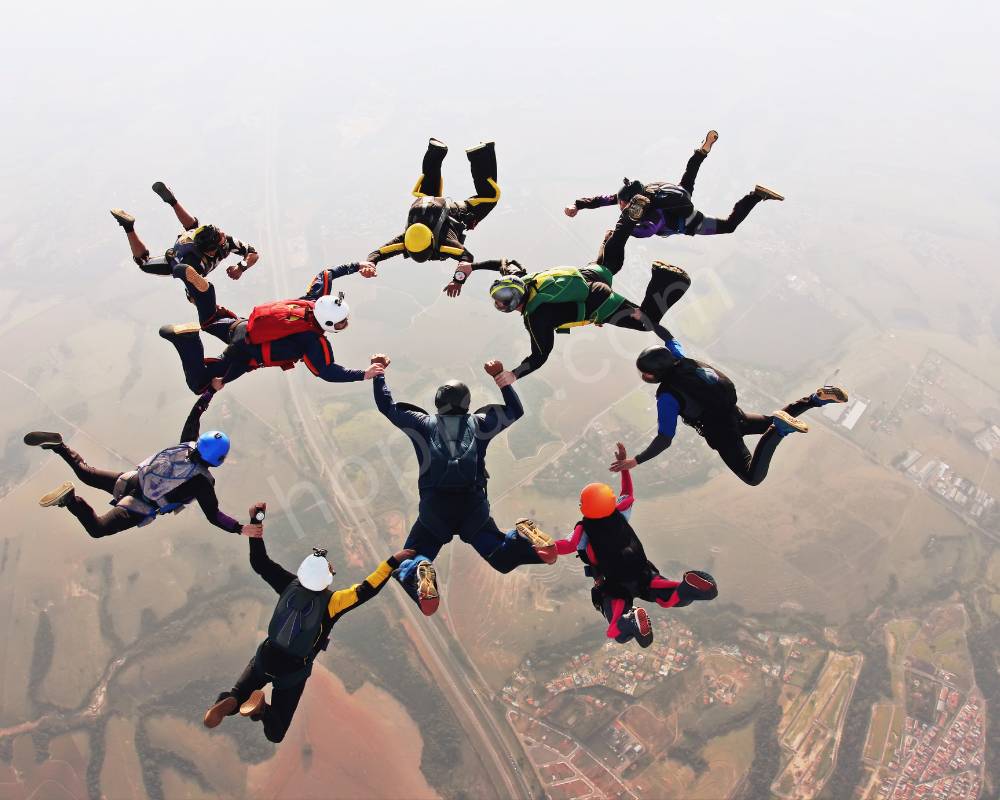
Ride the thrill of your life skydiving from a bird’s-eye view! The thrill of free-falling at heart-stopping speeds through the sky before the deployment of your parachute to admire mind-blowing 360-degree views. It’s for the brave who want to defeat their inner demons, experience pure weightlessness, and have a glimpse of the world from an entirely different viewpoint.
- Rock Climbing

Climb a sheer cliff face, overcome your vertigo, and revel in the tremendous feeling of the triumph at the top. Rock climbing needs attention, pull, problem-solving aptitude, and a bit of bravery. And while you’re hauling yourself up, controlling handholds and footholds step by step, you will discover your very own wits and appreciate the unmatched view when you reach the end.
- Scuba Diving
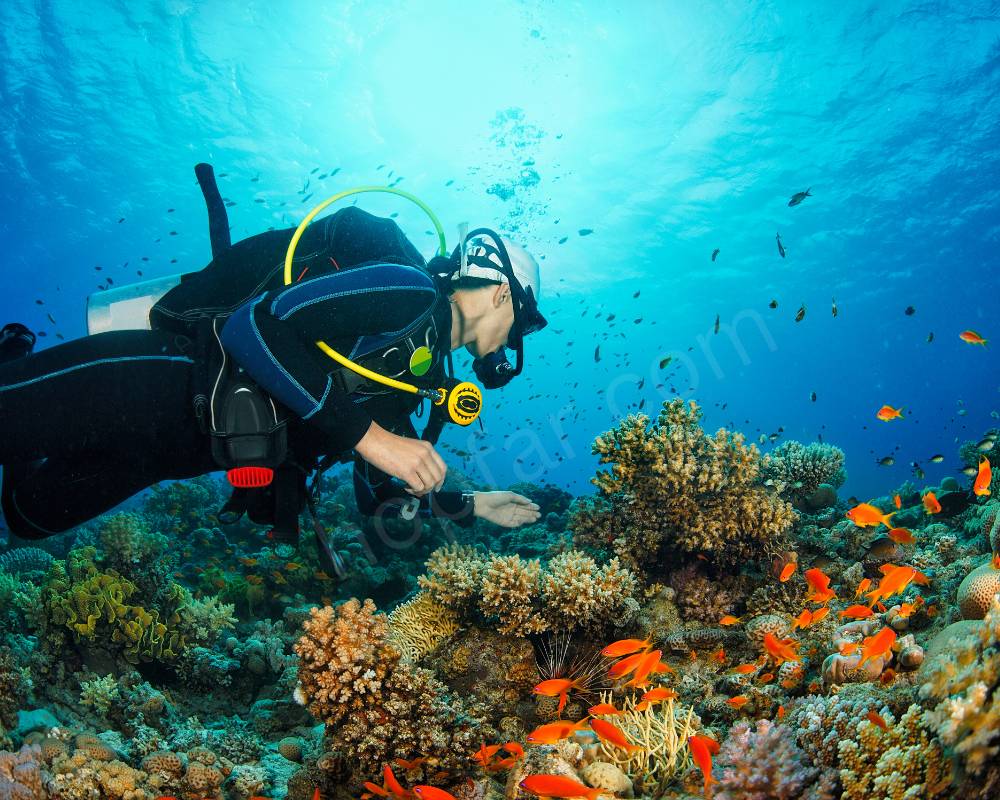
Venture into a magical wonderland and be astounded by the vivacious aquatic ecosystems bursting with life below the ocean surface. Explore rare marine creatures, observe coral reefs in their full brilliance, and discover the tranquility of the underwater environment. Scuba diving gives a rare opportunity to touch the ocean bottom with your hands, swim flying among schools of fish, and discover unexpected treasures of the underwater world.
- Bungee Jumping
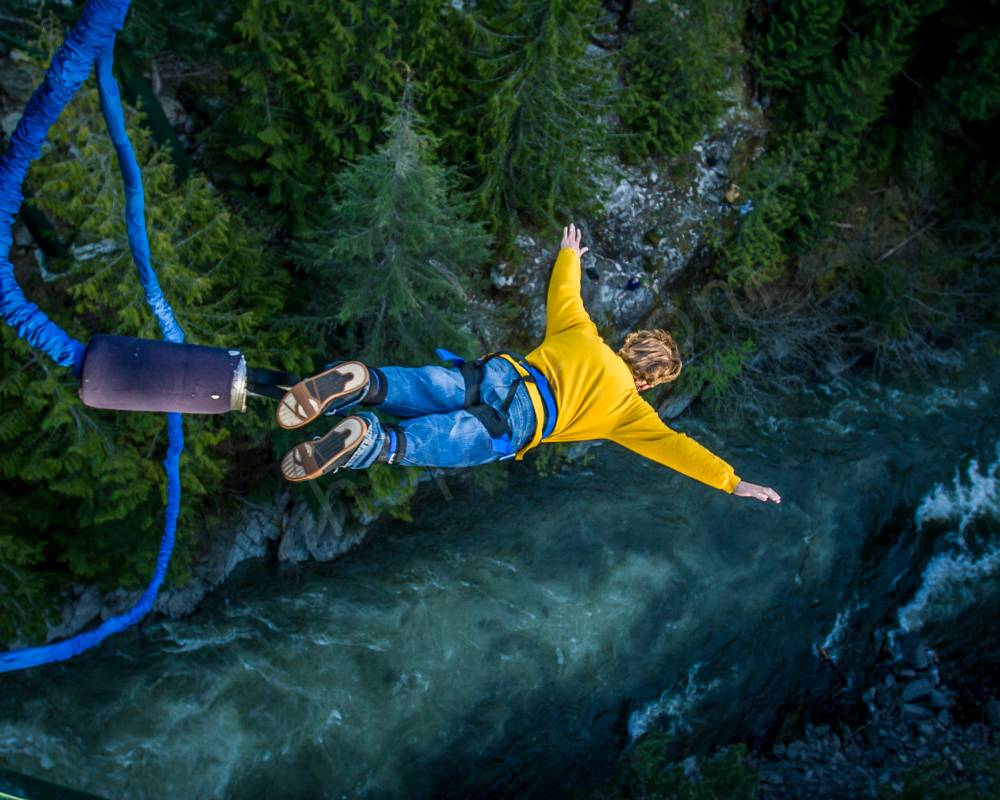
Go ahead and try the mind-blowing bungee jump that will absolutely make your heart pound. Experience the adrenaline-pumping sensation of being in freefall prior to the bungee cord catches you, which makes you feel super excited and gives you an exciting story to forever brag about. Bungee jumping is a blink of an eye in which you feel the high level of adrenaline making you face a scary challenge and boast about your crazy jump.
- Surfing

Ride the waves, own the essence of the ocean, and catch the rush of shaping your own way through the water. Surfing demands stability, coordination, and a fair amount of courage – but the price is a breathtaking relationship with nature. As you read the waves, paddle into position and pop up onto your board, you will all of a sudden experience the thrill of riding a moving wall of water and the satisfaction of mastering a new skill.
- Whitewater Kayaking

Push your paddling skills with the whitewater kayak and make your way through the rough rapids. This solo voyage requires focus and skillfulness and it is truly satisfying to reach the goal and to make friends with the river. Different from white-water rafting which is a group activity, kayaking offers the rare chance to push yourself beyond your limits, to develop your solo skills, and to enjoy the rush of successfully conquering a wild river on your own.
- Spelunking

Dive into the secrets of the earth by going into caves. Reach the bottom of the abyss, explore age-old formations, and find it as exciting as ever to climb into the unknown. Discover spelunking, the adventure for the inquisitive explorer, and get ready to witness hidden cave systems, unearth geological wonders, and challenge yourself in an amazing underground world.
- Mountain Biking

Enhance your biking skills by moving to higher altitudes with mountain biking. Overcome obstacles such as steep slopes, navigate challenging terrain, and feel the thrill as you descend the mountain trails. Mountain biking is the thrilling combination of speed and technical terrain. Whether you are cycling around rocky pathways, scaling hills, or going through forests, you’ll definitely shed calories and get the adrenaline rush of the ride.
- Hang Gliding

Flying like a bird and feel the freedom of the sky using hang gliding. Getting off the slope you’ll use wind currents to stay airborne and navigate large lands. Hang gliding gives unbelievable views of the world from above, a unique sensation of not feeling the gravity, and the excitement of flying without noise.
This is simply the appetizer of the phenomenal journeys about to begin. Therefore, put on your adventurous spirit, get equipped, and be ready for the adrenaline rush of these sports! Always, there is an adventure sport style suitable for each personality; therefore, don’t be afraid of stepping out from your comfort zone and attempting to overcome the challenges. You may even awaken your hidden talents or discover your craze for outdoor adventures.






















































